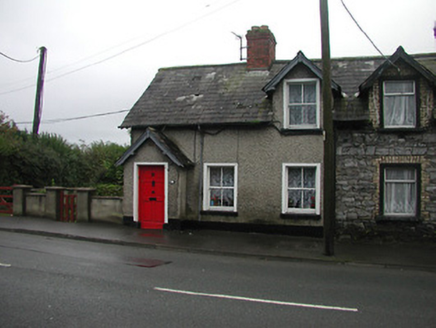Survey Data
Reg No
15310232
Rating
Regional
Categories of Special Interest
Architectural, Social
Original Use
House
Date
1890 - 1910
Coordinates
242768, 252646
Date Recorded
10/10/2006
Date Updated
--/--/--
Description
Semi-detached three-bay one-storey with attic level local authority house, built c.1900, having a projecting single-bay gable-fronted entrance porch to the east end of the front façade (north) and a single gable-fronted dormer window to the west end. One of a group of eighteen (see 15310028 for other records). Pitched natural slate roof with a brick chimneystack and cast-iron rainwater goods. Roughcast rendered walls over smooth rendered plinth course. Square-headed window openings having rendered reveals and two-over-two pane timber sliding sash windows. Square-headed doorcases to projecting porch having a replacement door. Road-fronted to the west end of Mullingar.
Appraisal
A rare example of an early local authority house that retains its early form, character and fabric. This house is the best surviving example out of a large number of houses of a similar design along Patrick Street and is one of the best surviving example of its type and date in Mullingar. The appearance of this house suggests it was originally constructed as part local authority scheme of social housing. A great many houses of this type were built in Ireland following the passing of the various Land and Labourers’ Acts (c.1880-1921) by the British Parliament in the late nineteenth and early-twentieth centuries and they are a feature of the outskirts of many of the larger Irish towns. The vast majority of these buildings are now heavily altered, as is the case with most of the buildings on Patrick Street (see 15310028), making this a rare survival. It is well-built to a conscious architectural design, which is basically an ‘improved’ interpretation of the vernacular housing of the time. The large garden to the rear reflect the social thinking of the time. This modest structure is an interesting part of the social history and built heritage of Mullingar and reflects the growth of Mullingar to the west at the time.

